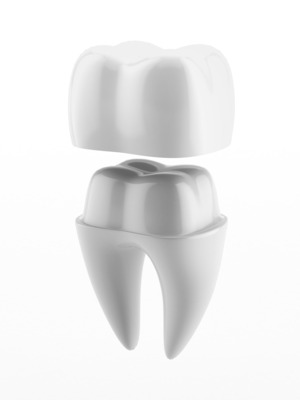
Dental crowns are a highly versatile form of restorative dentistry that dentists recommend in all sorts of situations. It’s easy to take this treatment for granted, but the fact of the matter is that it took a very long time for dental crowns to get where they are today. Your dentist is here to share the history of dental crowns so that you can gain a better appreciation for just how much they have evolved over the centuries.
The Ancient Origin of Dental Crowns
One of the earliest known uses of dental crowns is from 166 to 201 AD by the Etruscans. However, they weren’t treated as a solution for damaged teeth; instead, many Etruscans (particularly women) would get crowns made out of gold as a symbol of wealth. These gold crowns were not very durable, which meant that the people who wore them had to stay away from particularly coarse foods, instead sticking to soft meals cooked by servants.
Dental Crowns in the Middle Ages
Dentistry started to become a far more widespread practice in the Middle Ages. In particular, significant advancements were made in the 1500s. In 1530, a book titled “The Little Medicinal Book for all Kinds of Infirmities of the Teeth” was published; it described various types of dental procedures, which included the process of placing dental crowns.
Later, in 1575, Ambrose Pare (often called the father of surgery) published his “Complete Works” regarding dentistry. Among many other topics, it discussed dental crowns as a method for treating decayed teeth.
Major Advancements in Dental Crowns
A significant breakthrough for dental crowns happened in the late 1800s. Dr. Charles H. Land developed a new kind of crown referred to as a porcelain “jacket” crown. Its more natural appearance meant that it could be used to completely cover a damaged tooth and make it look as though it was never broken in the first place. However, these crowns often developed microscopic cracks that could cause problems for the teeth underneath.
Later in the 1900s, porcelain fused to metal crowns were invented, thus combining the aesthetic advantages of porcelain with the durability of metal. But it wasn’t until 1984 that the modern-day dental crown truly took shape. It was during this year that the first crowns made of ceramics and glass were made, and their many benefits (not the least of which was their natural appearance) quickly made them popular among dentists and patients.
Today, dental crowns are made from a variety of materials and can be used for protecting badly damaged teeth, making cosmetic improvements, and more. Do you think your smile could benefit from a dental crown? If so, don’t hesitate to call your dentist and schedule an appointment.
About the Author
Dr. Robert C. Fromuth completed his General Practice Residency at Lehigh Valley Hospital in Pennsylvania, and he holds membership with the Manchester Dental Society. His practice, Fromuth & Langlois Dental of Manchester, provides long-lasting, custom-made dental crowns in order to help patients restore the shape, size, and appearance of their teeth. To schedule a consultation with Dr. Fromuth, visit his website or call (603) 644-3368.
